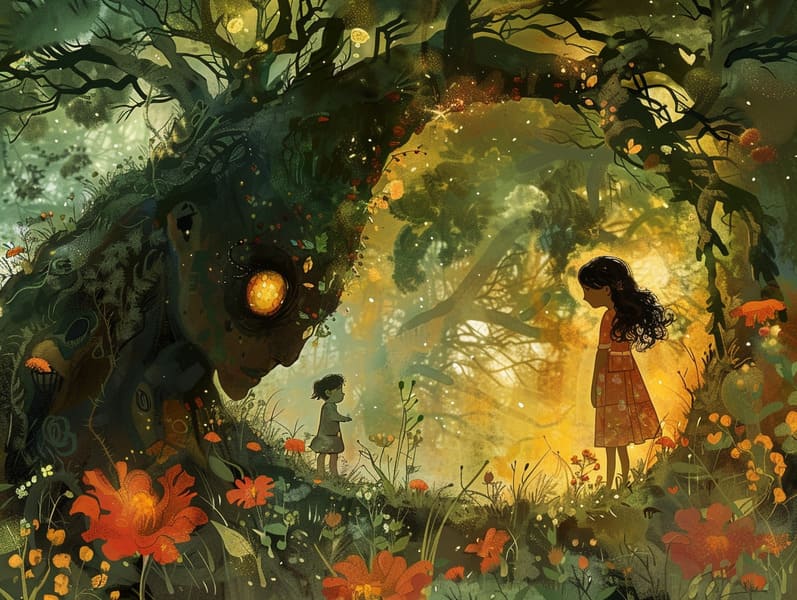The Creation of Best Fairy Tales and Their Unceasing Elegance.
The Creation of Best Fairy Tales and Their Unceasing Elegance.
Blog Article

Fairy tales have enduring presence. These narratives have been narrated from one generation to the next well before they were ever transcribed. They came from a variety of civilizations, including Eastern traditions. They were initially disseminated among older generations, often carrying themes and messages pertaining to the societal norms and beliefs of the time.
Jacob and Wilhelm Grimm, the two Grimm brothers, were among the first to assemble many of these beloved fairy tales. Their volume, "Grimm's Fairy Stories," included narratives like "The Little Glass Slipper," "The Story of Hansel and Gretel," and "Little Snow White," which have since become staples in the world of timeless fairy tales. Similarly, Hans Christian Andersen's imaginative narratives, such as "The Mermaid," and "The Duckling that Could," have won hearts worldwide, guaranteeing their place in the pantheon of beloved fairy tales.
Despite their ancient origins, fairy tales remain as impactful as ever, especially as kids' bedtime tales. These magical stories are now available in diverse formats, including beautifully illustrated books, magical animations, and internet fairy tales.
Their unwavering allure can be connected to several whimsical characteristics:
Moral Lessons: Timeless fairy tales often share important moral lessons. Fairy tales like "The Shepherd Boy and the Wolf" teach the value of truth, while "The Tortoise and the Hare" highlight the traits of steadfastness and unpretentiousness. These narratives offer young ones clear distinctions between ethical and unethical, guiding their moral compass in a tender yet profound way.
Kindness and Comprehension: Classic fairy tales frequently portray beings facing tests and troubles, encouraging young listeners to resonate with their struggles and champion their triumphs. For instance, "Beauty's Beast" teaches us the benefit of appreciating inner worth to understand the inner core of a person, encouraging awareness and discernment.
Cultural Insights: Many fairy tales are imbued with the cultural contexts from which they emerged. Discovering these tales can provide illuminating insights into different beliefs, developing a sense of cultural awareness and respect.
Imagination and Creativity: The extraordinary elements in classic fairy tales—magical beings—encourage children’s creative thoughts. These stories lead readers to extraordinary realms, encouraging imaginative dreams and a sense of mystery that stays a lifetime.
Classic fairy tales are not only spellbinding but also didactic. They serve as spellbinding tools in promoting various intellectual and emotional capacities in kids. When timeless fairy tales are spoken, they develop verbal skills by showing new words and sophisticated sentence structures. This practice also promotes hearing perception and attention span, as kids track the narrative, anxious to see what happens next.
Furthermore, discussing the themes and characters of classic fairy tales can promote logical thinking and critical thinking. Young ones are guided to notice patterns, forecast, and make sense of cause and effect. These debates also contribute to young readers speak out their thoughts and feelings, boosting their emotional intelligence.
In today’s digital age, the availability of web-based fairy tales has made these fairy tales more obtainable than ever. Web-based platforms and digital apps share large libraries of traditional fairy tales that can be browsed or heard anytime, anywhere. Fairy tales recited are particularly well-liked, extending an fun way for little ones to experience these captivating stories. Voice books and narrated videos carry characters and settings to life, often enhanced by delightful sound effects and songs that improve the storytelling journey.
The unending appeal of old fairy find it here tales lies in their ability to adjust to today's world while holding onto their central values. Contemporary versions of these narratives often integrate more multicultural figures and modern settings, making them accessible to today’s audience. However, the basic principles of braveness, kindness, and fair play remain unchanged, continuing to touch children of all ages.
Old fairy tales also offer a sense of protection and predictability. They supply a well-structured narrative with a distinct beginning, middle, and end, often winding up with the closure of conflicts and the triumph of virtue over wickedness. This reliability can be solacing for young readers, proffering a sense of assuredness in an always shifting world.
Ancient fairy tales continue to spellbind and instruct new generations, maintaining their enchantment and applicability in modern society. As nighttime stories for kids, they highlight a perfect blend of charm and enlightenment, nourishing moral values, empathy, and creativity. The presence of internet fairy tales and the widespread nature of fairy tales told out loud certify that these old narratives remain accessible to new generations.
By perpetuating and conveying these fairy tales, we continue to appreciate the rich tapestry of fables and cultural heritage. Whether you are perusing a vividly illustrated book, discovering a electronic collection, or listening to an audiobook, the wonder of popular fairy tales is always within reach. These narratives illustrate of the immortal impact of fairy tales and its ability to join us across eras and regions.
Even if you are reading a vividly illustrated book, discovering a digital library, or listening to an spoken story, the enchantment of children's fairy tales is always within reach.
These fairy tales point out of the undying presence of fairy tales and its ability to unite us across epochs and places, creating a bond that captivates and teaches alike.